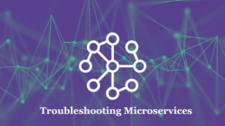Why Should Agency DevOps Teams Care About Microservices?
Source – meritalk.com Until now, most Federal agencies built their computing architectures like the aging buildings that house most of their headquarters, as huge monolithic structures that are inefficient, require frequent maintenance, and are wholly inflexible. Now, companies like Red Hat are offering a new path using microservices technology, which takes huge application stacks and breaks them down into tiny, modular components that can expand or contract based on needs, eliminating waste while ensuring critical services are always available regardless of
Read more





